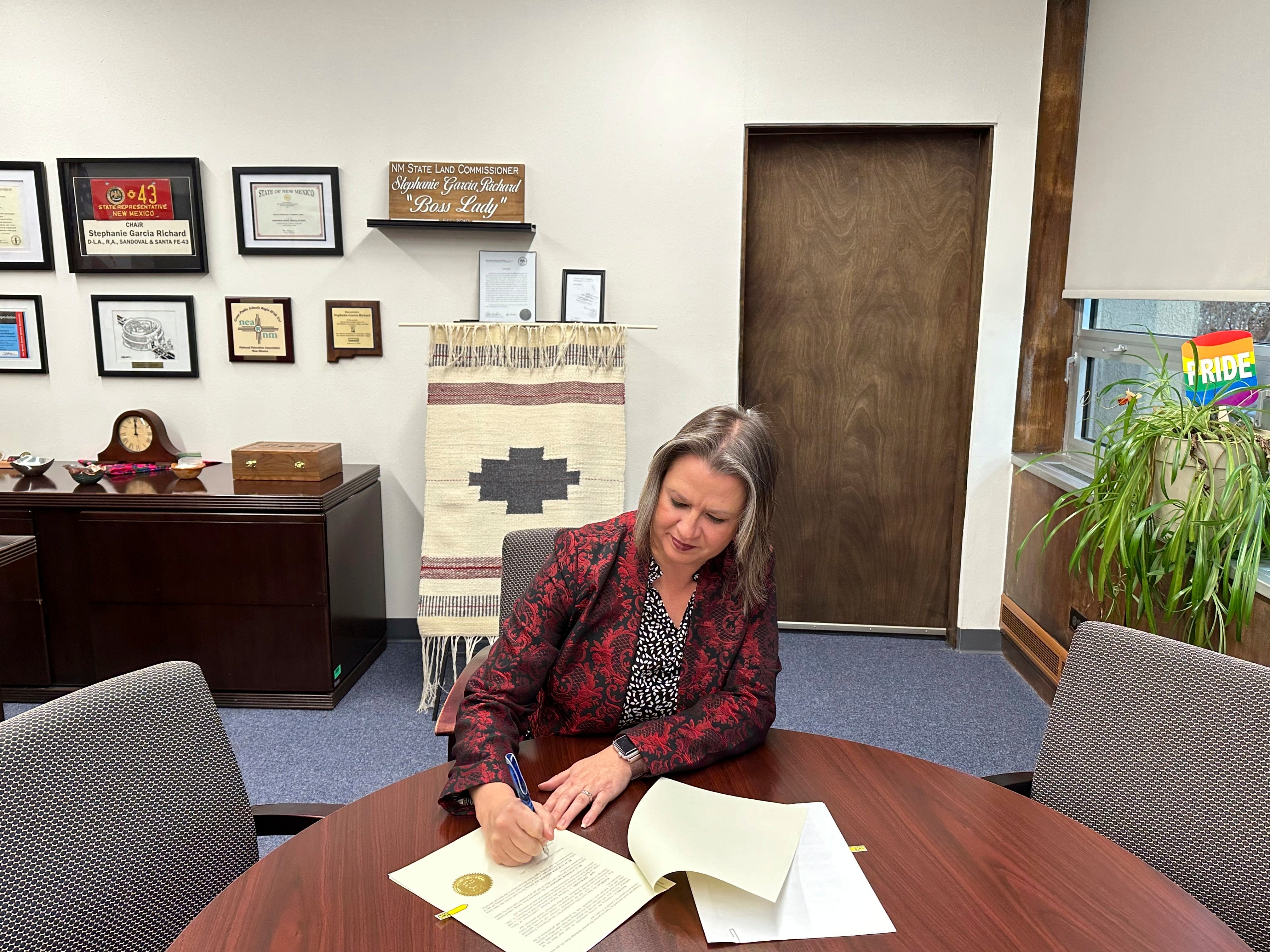New Mexico extends ban on oil and gas leasing around Chaco park, an area sacred to Native Americans
New oil and natural gas leasing will be prohibited on New Mexico state land surrounding Chaco Culture National Historical Park for the next 20 years

Your support helps us to tell the story
From reproductive rights to climate change to Big Tech, The Independent is on the ground when the story is developing. Whether it's investigating the financials of Elon Musk's pro-Trump PAC or producing our latest documentary, 'The A Word', which shines a light on the American women fighting for reproductive rights, we know how important it is to parse out the facts from the messaging.
At such a critical moment in US history, we need reporters on the ground. Your donation allows us to keep sending journalists to speak to both sides of the story.
The Independent is trusted by Americans across the entire political spectrum. And unlike many other quality news outlets, we choose not to lock Americans out of our reporting and analysis with paywalls. We believe quality journalism should be available to everyone, paid for by those who can afford it.
Your support makes all the difference.New oil and natural gas leasing will be prohibited on state land surrounding Chaco Culture National Historical Park, an area sacred to Native Americans, for the next 20 years under an executive order by New Mexico Land Commissioner Stephanie Garcia Richard.
Wednesday's order extends a temporary moratorium that she put in place when she took office in 2019. It covers more than 113 square miles (293 square kilometers) of state trust land in what is a sprawling checkerboard of private, state, federal and tribal holdings in northwestern New Mexico.
The U.S. government last year adopted its own 20-year moratorium on new oil, gas and mineral leasing around Chaco, following a push by pueblos and other Southwestern tribal nations that have cultural ties to the high desert region.
Garcia Richard said during a virtual meeting Thursday with Native American leaders and advocates that the goal is to stop encroachment of development on Chaco and the tens of thousands of acres beyond the park's boundaries that have yet to be surveyed.
“The greater Chaco landscape is one of the most special places in the world, and it would be foolish not to do everything in our power to protect it,” she said in a statement following the meeting.
Cordelia Hooee, the lieutenant governor of Zuni Pueblo, called it a historic day. She said tribal leaders throughout the region continue to pray for more permanent protections through congressional action.
“Chaco Canyon and the greater Chaco region play an important role in the history, religion and culture of the Zuni people and other pueblo people as well,” she said. “Our shared cultural landscapes must be protected into perpetuity, for our survival as Indigenous people is tied to them.”
The tribal significance of Chaco is evident in songs, prayers and oral histories, and pueblo leaders said some people still make pilgrimages to the area, which includes desert plains, rolling hills dotted with piñon and juniper and sandstone canyons carved by eons of wind and water erosion.
A World Heritage site, Chaco Culture National Historical Park is thought to be the center of what was once a hub of Indigenous civilization. Within park boundaries are the towering remains of stone structures built centuries ago by the region's first inhabitants, and ancient roads and related sites are scattered further out.
The executive order follows a tribal summit in Washington last week at which federal officials vowed to continue consultation efforts to ensure Native American leaders have more of a seat at the table when land management decisions affect culturally significant areas. New guidance for federal agencies also was recently published to help with the effort.
The New Mexico State Land Office is not required to have formal consultations with tribes, but agency officials said they have been working with tribal leaders over the last five years and hope to craft a formal policy that can be used by future administrations.
The pueblos recently completed an ethnographic study of the region for the U.S. Interior Department that they hope can be used for decision-making at the federal level.